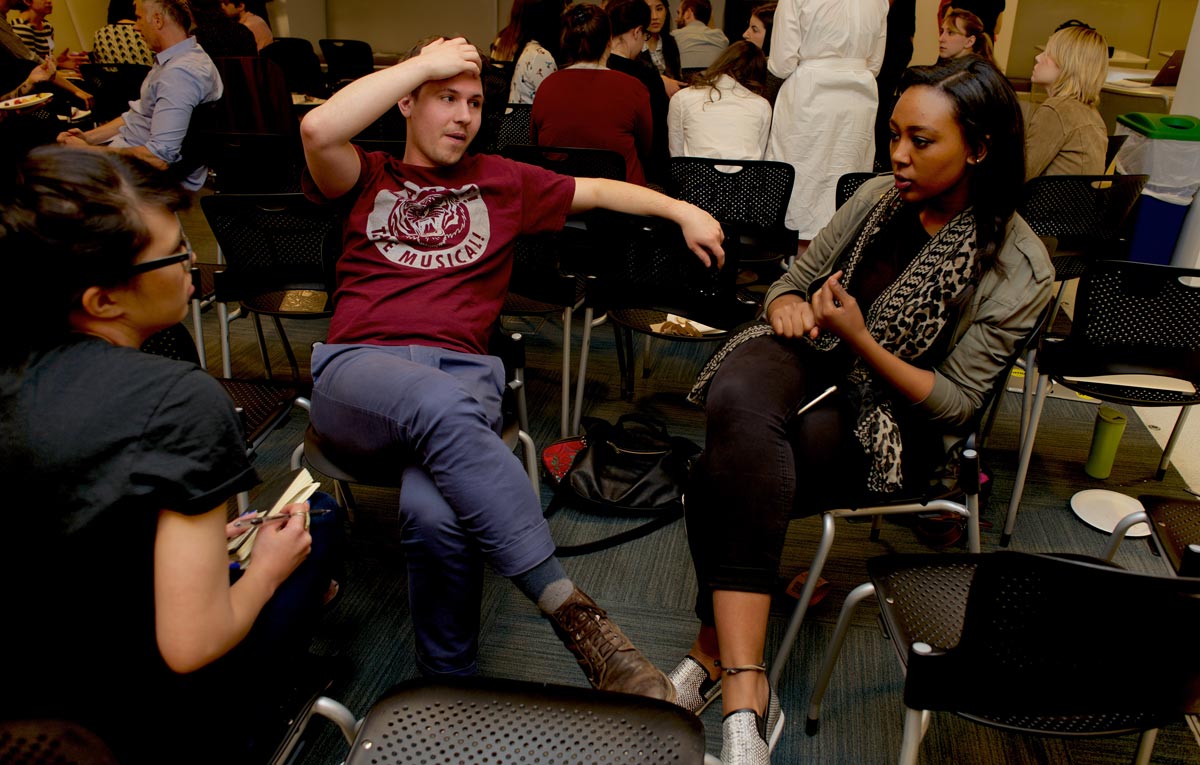Identifying, Vetting and Reporting Solutions Stories

Many people who want to do solutions journalism aren’t always sure where to begin. Our Basic Toolkit has sections on finding and vetting solutions stories, but here are some key points to keep in mind:
- Solutions journalism works for widely shared problems. If a problem is widely shared, then many different people are trying to solve it, and some of those responses will be more successful or newsworthy than others.
- Solutions journalism is enterprise reporting. It’s not a way to cover breaking news. But it can be used for a follow-up to a breaking news story if the underlying issue is a widely-shared problem.
- A solutions story can be about a problem of any scope. From a neighborhood effort to a country-wide initiative, the story should be proportional to the problem it is trying to address.
- Don’t look for perfection. It doesn’t exist. You don’t need the “perfect” response to a problem — you don’t know what that is, and no one will believe you anyway. Instead, find a response that’s effective — and there may be many to choose from — and tell the audience what we know and don’t know about how well the program works.
- The test: Is it a good story? You know the answer, because it uses the same judgments you make all the time with traditional stories.
- Evidence you use can be as diverse as what you’d use to show something is a problem: Your reporting might rely on data, on-the-ground interviews, experts, anecdotes or something else, so long as it’s clear and convincing. You don’t need years of randomized control trials.
- Solutions stories can happen at any point in the life of a program. If there’s very little evidence of success, however, you need to justify to readers why you’re writing about it anyway (See a SST collection on "Experiments in Progress."). Maybe experts find it very promising, or it’s just that the idea is really, really cool (See a SST collection on "Big New Ideas."). As long as you don’t overclaim about its effectiveness or potential, you’re in the clear.
- Look for small slices. Every problem is made up of lots of smaller problems. It’s often difficult to find a “solution” to the overall problem (for example poverty or energy security), but easier to find solutions stories about how people are solving those smaller slices (such as job training, housing programs, smart streetlights). Choose the small slice of a problem in your own area, and look for who’s doing a better job of tackling it.
- One good way to identify a subject for a story is to first analyze the problem. What’s the small slice of the problem that’s most important to my audience? Then look for who’s doing better on that.
- Start with experts who have an overview when looking for a solutions story. They can compare many different responses to a problem and know who’s doing it better.
- Look for the positive deviant. Who’s doing better than the others with the same resources? This may mean who’s top-ranking (or near it) in a database or who’s performing better than expected. Positive deviants are great because they provide ready-made justification for why you’re choosing this particular story. You're working backwards from the evidence instead of the other way around. And they save time and words — you can just concentrate on how it happened.
IN-CLASS LECTURE AND DISCUSSION
- Why is it hard to do a solutions story about a problem that is one-off or sui generis?
- What issues in the news right now might lend themselves to a solutions approach?
- When is it right to look at responses that are very far away or in places very different from your own? What makes a response relevant to the problems of the community or region you’re covering?
IN-CLASS EXERCISE
- Divide into pairs. One person plays reporter and one editor. The reporter thinks of a story and a piece of evidence that shows it’s a story. The editor can only say: “Is that all you got?” Then the reporter says: “no, there’s also this: ...” and cites more evidence. The editor is only allowed to say “is that all you got?” until that person is satisfied the evidence is enough.
- Brainstorm solutions journalism ideas, either known (here’s a program or approach I’d like to cover) or unknown (here’s a problem I’d like to find a response to). Divide into small groups and discuss. Choose one from each group to present to the whole class.
- For each “here’s a problem I’d like to find a response to” idea, discuss how you might start a search for a response.
- Take a problem and have class break it into small slices. Imagine a story for each one.
HOMEWORK ASSIGNMENTS
- Choose a story topic. List 10 real people who could help identify a specific story to cover.
- Find five possible solutions stories related to a specific topic or theme.
- List issues in the news that might take a solutions journalism approach.
- Find stories that use data and research particularly well or badly.
- Take an issue and write down ten possible small slices.
- Examples of useful/not useful data.
- Examples of useful/not useful research.
